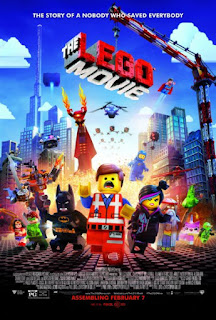Film Review - Stanley Kubrick’s “2001: A Space Odyssey” (1968)
Figure 1. 2001: A Space Odyssey Movie Poster
There is somewhat little to say, and yet a lot to be said about Stanley Kubrick’s “2001: A Space Odyssey” (1968). It is a spectacle to behold once viewing it. This breathtaking depiction of the endless netherworld that is space is truly one to leave you in a state of awe.
It is a journey that one must experience at some point. The majority of the film is in deafening silence, dialogue-wise, which is an accurate representation of what it means to travel within space. As Renata Adler had said, “But all this is the weakest side of a very complicated, languid movie—in which almost a half-hour passes before the first man appears and the first word is spoken, and an entire hour goes by before the plot even begins to declare itself.” (Adler, 1968).
The journey begins with a barren desert like plane, inhabited by apes. The main event occurring in this prolonged scene is that of an ape discovering the power of beating with a bone “weapon” of sorts, resulting in a fight between two ape tribes, the triumphant being the tribe to discover the use of a “weapon”. It could be said that this is depicting mans use for objects to help aid him in early life. As Roger Ebert says, “Thus do man's ancestors become tool-using animals.” (Ebert, 1968).
It is then discovered that a strange object has appeared on this planet, which we do not know of as the film doesn’t have a solid base destination. A black rectangular block, the monolith, suddenly arrives on the scene. No one knows for sure what this monolith does, or why it is there, and it’s purpose isn’t truly discovered until over halfway through the film, but even then, the subject isn’t crystal clear, it is only lightly brushed upon.
The transitions from one scene to another are lengthy. The scenes themselves are quite lengthy sequences. And yet, the film is enriched with pioneering technical effects, and featured orchestral music, now known by many. And in a way, the film distance itself from it’s audience. Because it is so complicated, as stated earlier, there is this sort of sterile, clinical environment portrayed to us; less humane, more robotic, in a sense, very little emotion being shown. Each actor almost seem like robots themselves, blank expressions, as if just reciting the script, rather than ‘acting it out’.
Figure 2. Space Craft corridor still
The film then ends with the most human interaction allowed, with astronauts travelling the vast expanse of space in hopes of discovering the true meaning of the monolith. Along the way, the computing system, HAL, became rather ‘sensitive’ after having been accused to making a slight mistake. This then leads to HAL ‘removing’ each space traveller one by one so that he may take control of the rest of the mission, until the last remaining character unplugs him. In the end, the remaining character ends up in the unknown, travelling through an array of psychedelic colours, to which this scene is portrayed to be similar to having a ‘trip’ upon taking certain substances. It is believed that this character, who’s name is barely mentioned within the film, has entered a black hole, and has ended up reaching different points in his life at the same time, until he is reborn as a foetus within space.
Confusing, but a masterpiece nevertheless. Without this stunning soundtrack and spectacular scenery, this film is quite an adventure within itself, producing a unique experience for each spectator. It is only you who can decide whether you want to travel into the unknown.
—-
Bibliography:
Adler, R. (1968) ‘Movie Review. 2001 A Space Odyssey’ (1968) In: http://www.nytimes.com/ 04.04.68 [online] At: http://www.nytimes.com/movie/review?res=9a04e6da1530ee3bbc4c53dfb2668383679ede (Accessed on 28.10.14)
Ebert, R. (1968) ‘Reviews: 2001: A Space Odyssey’ (1968) In: http://www.rogerebert.com/ 12.04.68 [online] At: http://www.rogerebert.com/reviews/2001-a-space-odyssey-1968 (Accessed on 28.10.14)
Milne, T. (2010) ‘2001: A Space Odyssey: Archive Review’ (2010) In: http://www.theguardian.com/ 12.10.10 [online] At: http://www.theguardian.com/film/2010/oct/21/space-odyssey-review-science-fiction (Accessed on 28.10.14)
Illustrations:
Figure 1. 2001: A Space Odyssey Movie Poster (1968) [Poster] At: http://s3.amazonaws.com/img.goldderby.com/images/1349282020_2001_7.jpg (Accessed on 28.10.14)
Figure 2. Space Craft corridor still (1968) [Movie Still] At: http://www.collativelearning.com/PICS%20FOR%20WEBSITE/stills%202/2001_a_space_odyssey_movie_image__3_.jpg (Accessed on 28.10.14)
Figure 3. The Monolith and the Astronaut at the end of his life (1968) [Movie Still] At: http://i2.listal.com/image/1149527/936full-2001%3A-a-space-odyssey-screenshot.jpg (Accessed on 28.10.14)
Figure 2. Space Craft corridor still (1968) [Movie Still] At: http://www.collativelearning.com/PICS%20FOR%20WEBSITE/stills%202/2001_a_space_odyssey_movie_image__3_.jpg (Accessed on 28.10.14)
Figure 3. The Monolith and the Astronaut at the end of his life (1968) [Movie Still] At: http://i2.listal.com/image/1149527/936full-2001%3A-a-space-odyssey-screenshot.jpg (Accessed on 28.10.14)






Nice review Chelsea; good discussion around the portrayal of space being how it really is, rather than the glorified adventure playground. And I like your concluding sentence :)
ReplyDelete